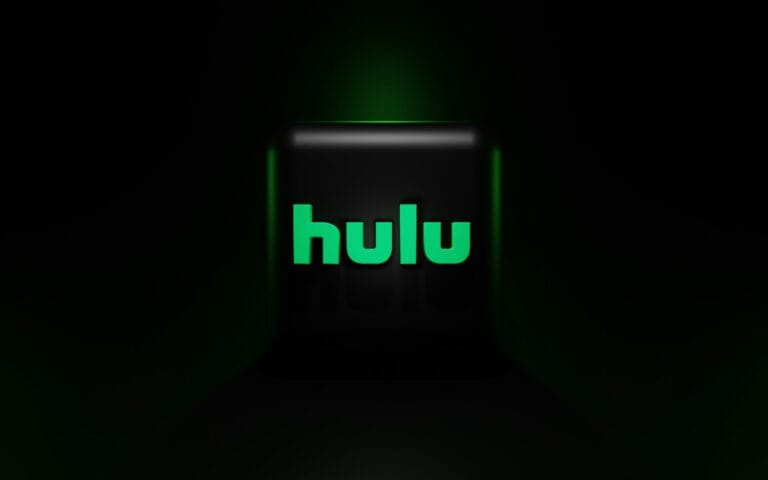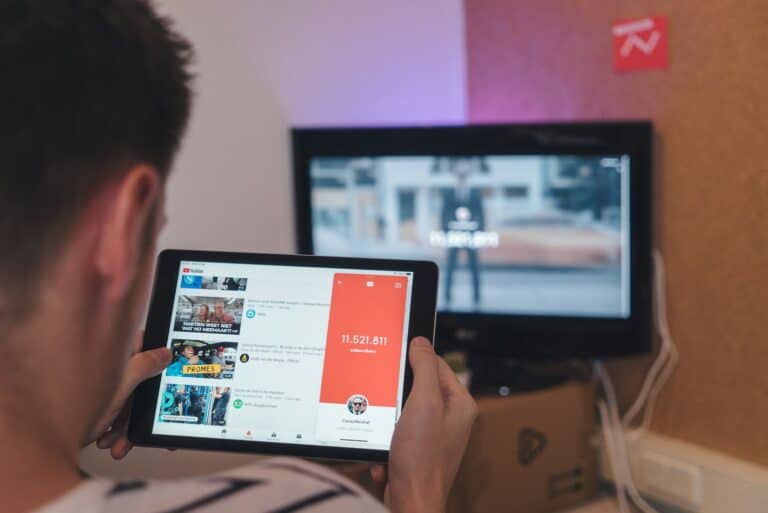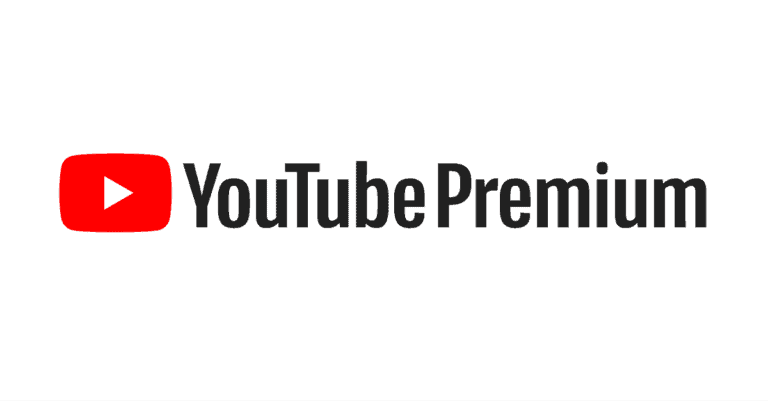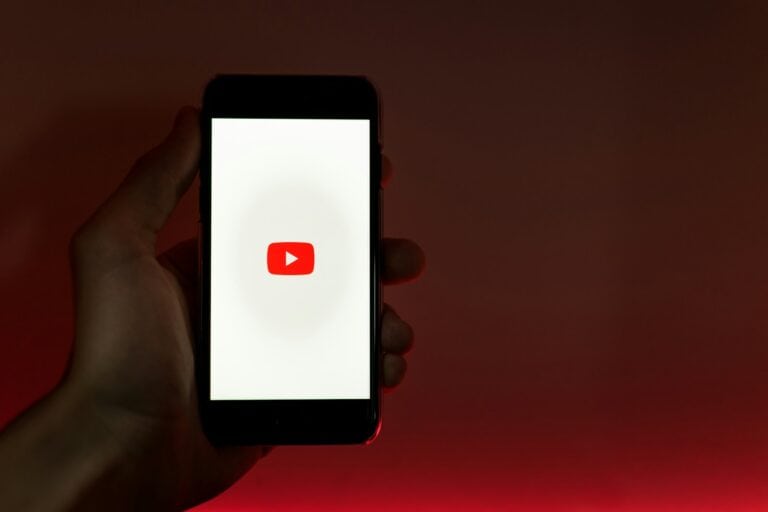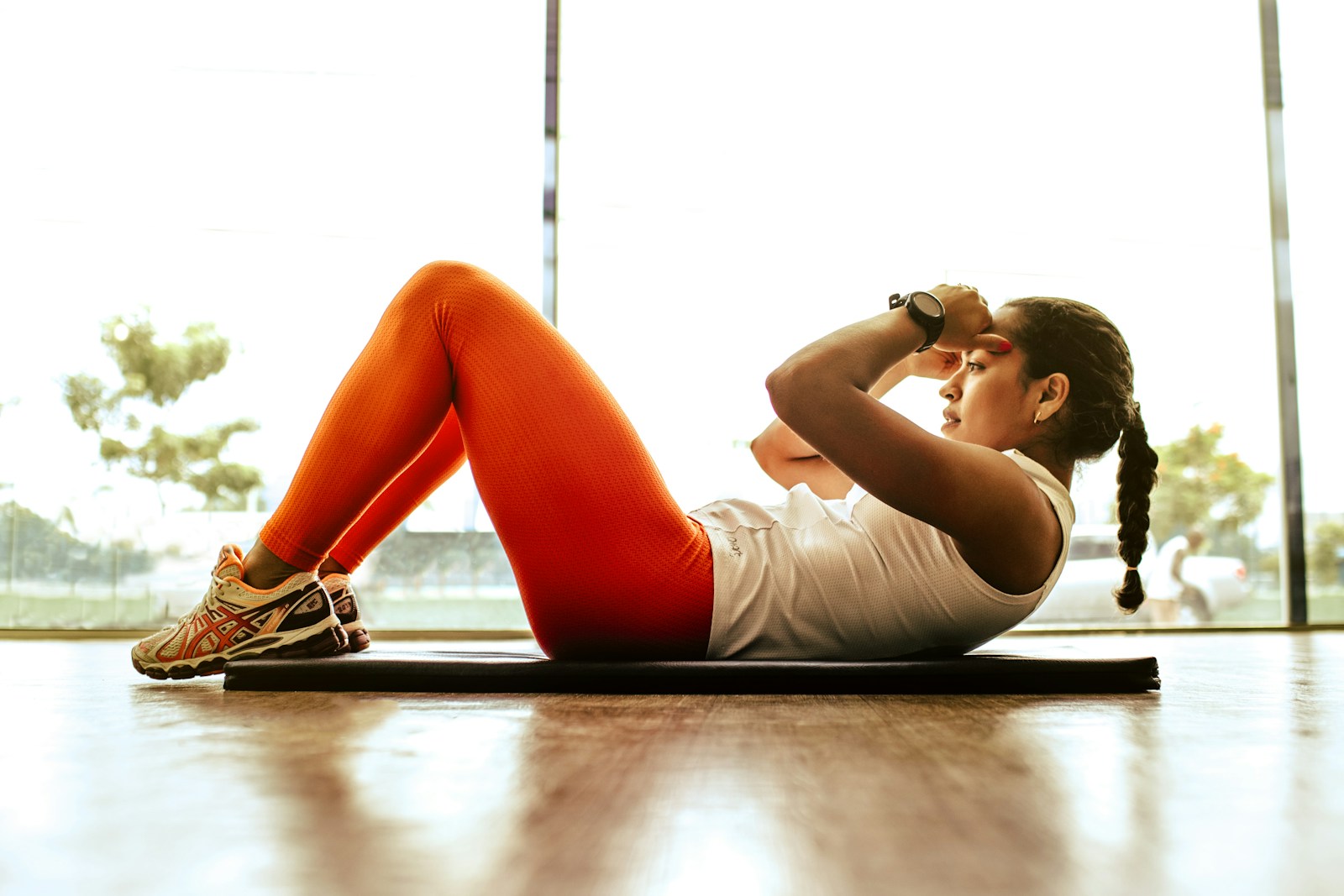
Working out at home has never been easier thanks to streaming workout videos. You can now access a wide variety of fitness classes right on your TV or mobile device without expensive gym memberships or equipment. Streaming workouts give you the flexibility to exercise whenever and wherever you want, with many platforms offering free or affordable options like FitOn with its hundreds of on-demand workouts including strength training, HIIT, and yoga.
Setting up your streaming workout space is simple. Many services like Fitness Blender offer professional full-length videos that require minimal equipment, while others like Peloton provide more comprehensive experiences with live classes and community features. You can even find free workout content with ads on Amazon Prime Video, making it accessible to almost anyone with an internet connection.
🎥 For Fitness Instructors: How to Stream Your Workouts
1. Choose a Streaming Platform
- Free options: YouTube Live, Facebook Live, Instagram Live.
- Professional options: Zoom, WpStream, Maestro, Vimeo OTT (for monetization).
- Your own website: With plugins like WpStream, you can keep full control of content and branding (source: WpStream).
2. Get the Right Equipment
- Camera: A good smartphone works, but a DSLR or webcam improves quality.
- Microphone: Use a wireless headset mic for clear audio while moving.
- Lighting: Natural light or affordable LED panels make a big difference.
- Tripod: Keeps the camera steady.
3. Set Up Your Space
- Clear enough room for exercise movements.
- Ensure good lighting and minimal background clutter.
- Test sound levels before going live.
4. Stream Your Class
- Connect your camera to the streaming platform.
- Do a quick test run for video and audio.
- Interact with participants (greet them, answer questions).
5. Save & Share
- Record the session so participants can rewatch later.
- Upload to YouTube, Vimeo, or your website for on‑demand access.
🏋️ For Fitness Enthusiasts: How to Stream & Watch Workouts
1. Pick a Platform
- Free options: YouTube, Instagram, TikTok (tons of free live workouts).
- Subscription apps: Peloton, Apple Fitness+, Beachbody On Demand.
- Virtual classes: Check if your local gym offers Zoom or live classes.
2. Connect to a Bigger Screen (Optional)
- Use AirPlay (iPhone → Apple TV).
- Use Chromecast (Android → Smart TV).
- Or connect via HDMI cable for a simple setup.
3. Optimize Your Setup
- Place your device where you can see it clearly.
- Use Bluetooth headphones or a speaker for better sound.
- Keep water and workout gear nearby.
✅ Pro Tips
- Stable internet: Minimum 5 Mbps upload speed for instructors; 10 Mbps download speed for viewers.
- Engagement: Instructors should encourage interaction (chat, Q&A).
- Consistency: Stream at the same times weekly to build an audience.
- Monetization: Use subscriptions, donations, or pay‑per‑view if you’re teaching professionally (source: Virtuagym).
👉 With the right setup, you can either teach fitness classes online or enjoy high‑quality workouts from home.
Key Takeaways
- Streaming workout videos provide flexible, affordable access to various fitness programs you can do at home without expensive equipment.
- Popular platforms like FitOn, Fitness Blender, and Peloton offer different workout styles ranging from strength training to yoga to suit your personal preferences.
- Setting up a simple space with a device that can stream content is all you need to start your home fitness journey today.
Understanding Streaming Workouts
Streaming workout videos lets you reach a global audience or simply follow along with your favorite trainers from home. Here’s how to do it effectively.
Streaming workouts have transformed how people approach fitness, making exercise more accessible and flexible than ever before. These digital fitness solutions let you work out whenever and wherever you want.
Evolution of Fitness Streaming
Fitness streaming began as simple recorded workout videos but has evolved dramatically with technology advances. In the early days, people relied on DVD workouts or basic YouTube videos for at-home exercise options.
Today’s streaming platforms offer sophisticated, interactive experiences with professional production quality. Many fitness brands have developed dedicated streaming services that provide unlimited access to various workout styles.
The COVID-19 pandemic accelerated this evolution, pushing many traditional gyms and trainers to embrace digital offerings. What was once a niche market has become mainstream, with options ranging from basic free content to premium subscription-based platforms.
Types of Streaming Workouts
Streaming workouts come in several formats to suit different preferences and goals:
- Live classes: Real-time sessions where instructors lead workouts and can sometimes provide feedback
- On-demand libraries: Pre-recorded workouts you can access anytime
- Interactive sessions: Workouts that adapt based on your performance or input
Content varies widely across platforms:
- High-intensity interval training (HIIT)
- Yoga and meditation
- Strength training
- Dance fitness
- Specialized training (prenatal, senior fitness, rehabilitation)
Many platforms allow you to filter workouts based on duration, equipment needed, and difficulty level, making it easier to find exercises that match your fitness goals.
Benefits of Streaming Workouts
Working out via streaming services offers numerous advantages for your physical and mental health. The convenience factor is significant—you can exercise without commuting to a gym, saving valuable time.
Streaming workouts are often more affordable than gym memberships or in-person classes. Many platforms offer monthly subscriptions for less than the cost of a single in-person session.
You can maximize your workout time without limitations on class size or scheduling conflicts. This flexibility helps you maintain consistency, which is crucial for reaching your fitness goals.
Digital platforms also create virtual communities where you can connect with like-minded people. Many services include progress tracking features, helping you stay motivated and accountable on your fitness journey.
Setting Up for Success
Creating a professional streaming setup requires thoughtful planning for your space, equipment, and technical configuration. Your viewers will appreciate quality production that enhances their workout experience.
Choosing the Right Space
Select a clean, uncluttered area with enough room to move freely during your workouts. Aim for at least 6×6 feet of clear floor space for most fitness activities, more if you’re teaching yoga or other movement-intensive exercises.
Good lighting is crucial. Position yourself facing natural light when possible, or invest in ring lights or softbox lighting to eliminate shadows. Avoid backlit situations that turn you into a silhouette.
Consider your background carefully. A neutral wall, branded backdrop, or neat fitness space works well. Remove personal items and distractions from the frame. Test your setup by recording a short clip to check how everything looks on camera.
Sound matters too. Choose a quiet location away from street noise, air conditioners, or household activities. Soft furnishings like curtains or rugs can help reduce echo in empty rooms.
Equipment Essentials
Your camera setup doesn’t need to be expensive to start. Many streaming fitness classes begin with just a smartphone on a stable tripod. Position it at eye level or slightly above for the most flattering angle.
For audio, consider these options:
- Lavalier microphone: Clips to clothing, great for movement
- Wireless headset: Provides clear sound while staying hands-free
- USB microphone: Excellent quality if staying near your computer
Your workout equipment should be visible and organized. Have all necessary gear for your session—dumbbells, resistance bands, yoga mats, or stationary bikes—arranged neatly within reach but not cluttering your space.
Wear solid colors that contrast with your background. Avoid patterns, logos, or very bright colors that can be distracting or cause camera issues.
Technical Setup for Streaming
Choose a reliable streaming platform that fits your needs. Options include YouTube Live, Zoom, or dedicated fitness platforms that offer better monetization and client management tools.
Test your internet connection before going live. A wired ethernet connection is more stable than WiFi. Aim for upload speeds of at least 5 Mbps for HD streaming. Close unnecessary applications to maximize performance.
Consider these technical elements:
- Set your camera to 1080p resolution (HD) if possible
- Position your device in landscape mode, not portrait
- Test sound levels before starting
- Have a backup device charged and ready
Many instructors use OBS (Open Broadcaster Software) to enhance streams with overlays showing exercise timers, your name, or upcoming fitness classes. This free software lets you switch between camera angles if you’re using multiple devices.
Do several practice runs before your first live session. Record yourself and review the footage to identify improvements.
Selecting Your Workout Program
Finding the right streaming workout program can feel overwhelming with so many options available. The key is to understand your current fitness level, identify clear goals, and explore different workout styles until you find what keeps you motivated.
Assessing Fitness Levels
Before starting any workout program, you need to honestly evaluate where you stand fitness-wise. Are you a complete beginner or returning after a break? Take time to assess your current capabilities without judgment.
Try these simple assessments:
- How many push-ups can you do with good form?
- Can you hold a plank for 30 seconds?
- How winded do you get after climbing a flight of stairs?
Many streaming platforms like FitOn offer fitness tests to help determine your starting point. Some even track your heart rate to give personalized intensity recommendations.
Remember that everyone starts somewhere. Being realistic about your current fitness level helps prevent injury and frustration.
Aligning Workouts with Fitness Goals
Your workout selection should directly support what you want to achieve. Different goals require different approaches to training.
Common fitness goals and recommended workouts:
| Goal | Recommended Workout Types |
|---|---|
| Weight loss | HIIT, cardio, strength training |
| Muscle gain | Progressive strength training |
| Flexibility | Yoga, Pilates, stretching routines |
| Endurance | Longer cardio sessions, interval training |
Beachbody alternatives like Fitness Blender organize workouts by goal, making it easier to find relevant content.
Be specific with your goals. Instead of “get fit,” try “be able to do 10 push-ups” or “improve flexibility in my hamstrings.”
Exploring Diverse Workout Styles
Variety isn’t just about preventing boredom—it’s essential for balanced fitness and continued progress.
Try mixing these workout styles:
- Cardio: Gets your heart pumping; includes dance, kickboxing, and running
- HIIT: Short, intense bursts followed by rest periods
- Strength training: Builds muscle using weights or body resistance
- Yoga/Pilates: Improves flexibility, core strength, and mind-body connection
Platforms like Nike Training Club on Netflix and others mentioned in Byrdie’s review of 12 streaming fitness channels offer diverse workout libraries.
Don’t be afraid to try something new. Your perfect workout might be something you haven’t considered yet, like dance cardio or boxing-inspired workouts.
Interactive Features and Community Building
Building an engaged fitness community adds value to your streaming workouts beyond just exercise videos. The right interactive elements transform passive viewing into an immersive experience that keeps participants coming back.
Live Classes and Real-Time Feedback
Live streaming creates a special connection between instructors and participants. During live fitness classes, trainers can provide immediate form corrections and personalized encouragement. This real-time feedback helps prevent injuries and improves workout effectiveness.
Consider incorporating interactive tools like:
- Polls during workout breaks to gauge energy levels
- Q&A sessions after workouts for technique questions
- Heart rate monitor integration to show effort levels
- On-screen shoutouts to recognize participant milestones
Many platforms now offer two-way video options where you can see participants (with their permission) to offer personalized guidance. This creates an experience closer to in-person training sessions while maintaining the convenience of home workouts.
Leveraging Social Aspects
The social dimension of fitness is powerful for motivation and accountability. Hosting fitness challenges gives members shared goals to work toward together.
Effective social strategies include:
- Creating private Facebook or Discord groups for workout discussions
- Implementing point systems or leaderboards for friendly competition
- Establishing buddy systems to pair members for accountability
- Highlighting member success stories in newsletters
These social connections help combat isolation that can come with home workouts. Many participants report mental health benefits from being part of a supportive community that shares their fitness journey.
Adapting to Online Fitness Communities
Virtual fitness communities require thoughtful cultivation. Unlike gym environments where interactions happen naturally, online spaces need structured opportunities for connection.
Consider these community-building approaches:
- Schedule virtual “coffee chats” before or after workouts
- Create themed workout weeks to generate excitement
- Develop a referral program to reward members who bring friends
- Host occasional free live streams to attract new participants
Remember that accessible technology is crucial. Your platform should work well on multiple devices and offer simple ways to participate in discussions. The most successful fitness streamers make community engagement as important as the workouts themselves.
Integrating Technology and Wearables
Modern workout streaming benefits greatly from tech integration. Wearables and smart equipment can transform your home fitness experience by providing real-time feedback and creating a more interactive workout environment.
Using Fitness Trackers and Apps
Fitness trackers like the Apple Watch have revolutionized how you monitor your workouts. These devices track your heart rate, calories burned, and movement patterns during streamed exercise sessions.
Most streaming platforms now offer companion apps that sync with your wearables. This integration lets you see your metrics on screen while following along with instructors.
For example, when streaming a Peloton class, your watch can display your current heart rate zone alongside the instructor’s cues. This real-time feedback helps you maintain proper intensity levels.
The most valuable aspect is tracking progress over time. Your apps store workout history, making it easier to see improvements in strength, endurance, and consistency. Many platforms also use this data to suggest personalized workout plans.
Setting achievable goals becomes simpler with these tools. You can track weekly activity, compare performance across similar workouts, and celebrate measurable improvements in your fitness journey.
Smart Equipment Interconnectivity
Today’s home gym equipment often features built-in connectivity that enhances streamed workouts. Smart bikes, treadmills, and strength equipment can automatically adjust resistance or incline based on instructor cues.
Many devices now connect directly to your streaming platform of choice. This creates a seamless experience where your equipment responds to the workout in real-time.
For strength training, smart dumbbells and resistance systems can track rep counts, form, and intensity. This data helps you maintain proper technique even without an in-person trainer.
The most advanced systems create immersive experiences by combining video content with equipment feedback. For example, a rowing machine might show you rowing through virtual waters while tracking your power output.
Look for equipment that offers open connectivity rather than closed ecosystems. This ensures you can use your favorite streaming services without being locked into a single platform.
Enhancing Your Workout Experience
Getting the most from your streaming workouts involves more than just following along. The right environment and approach can transform an ordinary session into an exceptional fitness experience.
Music and Sound Design
The power of music can dramatically enhance your workout performance. Choose workout videos with energizing soundtracks that match your preferred tempo and style.
Many streaming platforms offer customizable sound options where you can adjust the instructor’s voice relative to the background music. This feature helps you stay focused on form and instructions.
Consider using wireless headphones for better sound quality and fewer distractions. They allow you to fully immerse in the guidance without disturbing others around you.
For high-intensity workouts, look for videos with upbeat, fast-tempo music that can increase your power output. Research shows that syncing movements to music can improve endurance by up to 15%.
Visualization and Mindfulness
Incorporate mindfulness techniques into your streaming workouts to maximize both physical and mental benefits. Begin each session with a brief moment to set your intention for the workout.
When following along with instructors, actively visualize the muscles you’re targeting with each movement. This mind-muscle connection improves form and increases workout effectiveness.
Consider filming your sets occasionally to analyze your form. Watching yourself perform exercises helps identify areas for improvement and tracks progress over time.
Try including streaming workouts that blend fitness with meditation elements. These hybrid sessions can improve your mental health while developing physical strength.
Customizing Workouts
Personalization makes streaming fitness more effective for your specific goals. Many platforms allow you to filter workouts by:
- Duration (10-60 minutes)
- Equipment needed
- Fitness level
- Target muscle groups
- Workout style
Don’t hesitate to modify exercises based on your abilities and limitations. Even when following a structured program, listen to your body and adjust intensity as needed.
Create a schedule that alternates different types of streaming workouts to prevent plateaus. Mix strength training, cardio, flexibility work, and recovery sessions throughout your week.
Remember that consistency trumps perfection. A 15-minute daily workout yields better results than an occasional 90-minute session.
Maintaining Routine and Progress
Sticking with streaming workouts over time requires tracking your journey and making smart adjustments. The right approach helps you push through difficult periods while avoiding burnout or injury.
Tracking Progress and Adaptations
Digital fitness journeys benefit greatly from consistent monitoring. Many streaming fitness platforms include progress tracking features to help you see improvements over time. Consider these effective tracking methods:
- Workout journal: Note exercises, sets, reps, and how you felt
- Photos: Take monthly progress pictures from the same angles
- Performance metrics: Record weights lifted, workout duration, or recovery time
- Digital apps: Use fitness apps that sync with your streaming services
Don’t rely solely on the scale. Track non-weight victories like improved mood, better sleep quality, or increased energy levels.
These measurements help you recognize patterns and make informed decisions about when to increase intensity or try new workout styles.
Overcoming Plateaus
Plateaus are normal in any fitness journey. When progress stalls with your streaming workouts, try these proven strategies:
- Rotate workout styles – Switch between different YouTube workout channels to challenge your muscles in new ways
- Adjust variables – Change tempo, rest periods, or resistance levels
- Progressive overload – Gradually increase weights, reps, or workout duration
Your body adapts to repeated stimulus, so variation is key. Many streaming platforms offer program “seasons” or progressive series designed to prevent adaptation.
Don’t be afraid to take a deload week with lighter workouts when feeling stuck. Sometimes a brief step back allows for two steps forward in your fitness journey.
Balancing Workout Intensity
Creating a sustainable workout schedule requires balancing intensity across your weekly routine. Building an effective exercise routine means mixing challenging sessions with recovery-focused activities.
Weekly Intensity Balance Example:
| Day | Activity Type | Intensity |
|---|---|---|
| Mon | Strength | High |
| Tue | Cardio | Moderate |
| Wed | Flexibility/Yoga | Low |
| Thu | HIIT | High |
| Fri | Strength | Moderate |
| Sat | Active Recovery | Very Low |
| Sun | Rest | None |
Pay attention to your body’s signals. Persistent soreness, decreased performance, or lack of motivation may indicate you need more recovery time.
Remember that consistency trumps intensity. It’s better to complete three moderate workouts weekly than burn out after one week of daily high-intensity sessions.
Frequently Asked Questions
Finding the right workout videos to stream can sometimes feel overwhelming with so many options available. Here are answers to common questions about accessing fitness content across different platforms and services.
What platforms offer free streaming of workout videos?
YouTube is one of the best platforms for free workout videos. Many fitness instructors and brands upload full-length workouts covering everything from yoga to HIIT training.
Fitness Blender offers hundreds of free workouts on their website and YouTube channel, organized by difficulty level, workout type, and duration.
The Nike Training Club app provides free access to premium workouts and programs led by professional trainers. You can stream these directly to your TV using casting options.
How can beginners access and stream workout videos online?
As a beginner, you can start with dedicated fitness apps like Couch to Fitness that offer beginner-friendly programs. These typically include introductory videos that teach proper form.
YouTube has specific channels dedicated to beginners with modified exercises and detailed instructions. Search for “beginner workout” to find appropriate content.
Many streaming platforms offer filtering options to show only beginner-level workouts. Look for ratings or difficulty indicators to find suitable content for your fitness level.
What services provide free workout videos for Amazon Prime members?
Amazon Prime includes several fitness programs in its Prime Video library at no additional cost. These range from yoga to cardio workouts.
Prime members can access “Amazon Prime Fitness” which features various workout styles including strength training, cardio, and flexibility programs.
Some third-party fitness channels offer free trial periods through Amazon Prime Video channels, giving you access to premium content temporarily before deciding to subscribe.
Are there any exercise videos available to stream on Netflix?
Netflix currently offers limited dedicated fitness content compared to other platforms. Their selection changes periodically, so it’s worth checking their current catalog.
Some Netflix documentaries about athletes or fitness include training segments that can be educational, though they’re not structured workout programs.
For dedicated fitness content, you might want to explore alternative platforms that specialize in streaming fitness classes.
Where can I find workout videos that I can stream for free?
In addition to YouTube, many public libraries offer free access to fitness video streaming services through partnerships with platforms like Hoopla or Kanopy.
Fitness equipment manufacturers often provide free workout videos on their websites to showcase their products. These can be high-quality options even if you don’t own their equipment.
Many fitness influencers offer free workouts through Instagram Live or IGTV that remain accessible after the initial broadcast. These can be streamed from your phone or cast to a larger screen.
Does Paramount Plus include fitness or exercise content in their library?
Paramount Plus offers some fitness content through their Pluto TV integration, which includes dedicated fitness channels.
The platform occasionally features workout programs as part of their broader content library, though fitness is not their primary focus.
For the most current information on Paramount Plus fitness offerings, check their website as content libraries are updated regularly.


